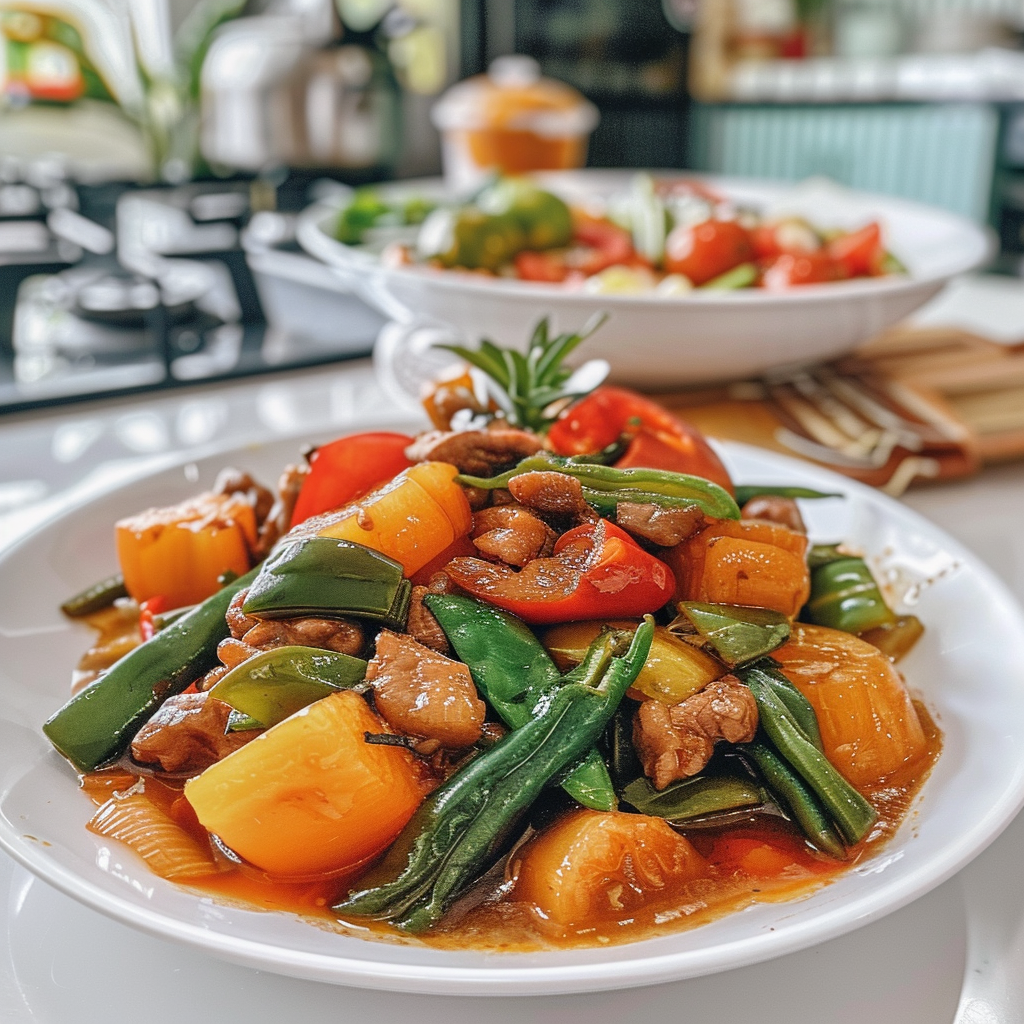Hello Foodies! Jacob here, dishing out some kitchen excitement from our Beyond the Bayou Blog. I’ve cooked a batch of homemade Pinakbet Recipe that’s just too good!
Packed with bold taste and healthy stuff, this dish blends Asian-inspired goodness into one simple, tasty meal.
Remember this: sizzling sesame oil, garlicky pork, and a spicy punch of sriracha, all mixed with crunchy cabbage and soft shirataki noodles.
Whether you’re in a rush or aiming to wow your guests, our Pinakbet Recipe is guaranteed to hit the spot!
Pinakbet Recipe
Equipment
- Pan
- Serving Plates
- Spatula
Ingredients
- 1 Tbsps Cooking oil
- 1 Medium Onion
- 3 Cloves Garlic
- 2 Medium Tomatoes sliced
- 1 Small Bitter gourd Ampalaya, sliced
- 1 Medium Eggplant
- 1 Cup Squash
- 1 Cup String beans cut into 2-inch pieces
- 1 Cup Okra
- 1 Cup Kabocha squash
- 1/4 Cup Bagoong
- 2 Cups Water
- Salt and pepper to taste
Instructions
- Heat cooking oil in a pan over medium heat. Sauté onions and garlic until fragrant.
- Add tomatoes and cook until softened.
- Stir in bitter gourd, eggplant, squash, string beans, okra, and kabocha squash. Cook for 5 minutes.
- Add bagoong and water. Stir to combine.
- Cover and simmer for 15-20 minutes or until vegetables are tender.
- Season with salt and pepper to taste. Serve hot with rice.
Notes
- Adjust the amount of bagoong according to your taste preference. Some prefer it more savory, while others prefer it less salty.
- You can add other vegetables like ampalaya (bitter melon), patola (sponge gourd), or sigarilyas (winged beans) for variety.
Nutrition
Time For My Personal Tips!
Tip 1: Soak the bitter gourd in salted water for about 10 minutes before cooking to reduce its bitterness.
Tip 2: Don’t overcook the vegetables to retain their crispiness and nutrients.
Tip 3: Use fresh and ripe tomatoes for a richer flavor in the stew.
Tip 4: Experiment with different types of squash for varied texture and taste.
The Story Behind Pinakbet Recipe

The story behind Pinakbet starts with its name, derived from the Ilocano word “pinakebbet,” meaning “shrunk” or reduced in size.
This reflects how the cooking process causes the ingredients to shrink and meld together. Traditionally, slicing the ampalaya into quarters adds saltiness, resulting in tender, shrunken vegetables, flavorful meat, and a savory broth.
Originating from the Ilocos region, Pinakbet has become a beloved dish throughout the Philippines and even beyond. While the traditional recipe excludes squash, modern versions may include it, although some argue it alters the dish’s original taste.
Despite variations, most Pinakbet recipes feature a mix of vegetables like string beans, tomatoes, and eggplant, seasoned with the beloved Filipino condiment – bagoong.
Variations:
- Seafood Pinakbet: Add shrimp, squid, and fish fillets to make a seafood version of pinakbet.
- Meat Lover’s Pinakbet: Include pork belly, pork ribs, or chicken pieces for a meatier option.
- Coconut Milk Pinakbet: Add coconut milk for a creamy twist to the traditional recipe.
- Spicy Pinakbet: Incorporate chili peppers or chili flakes for an extra kick of heat.
- Root Vegetable Pinakbet: Replace some of the traditional vegetables with root vegetables like carrots, potatoes, and sweet potatoes for a heartier dish.







Alaric Voss
Monday 15th of July 2024
Thanks for making me look like a pro in the kitchen!
Caspian Locke
Monday 15th of July 2024
I’m curious, what inspired you to make this Pinakbet recipe? Do you have any other Filipino dishes you recommend trying?
Gideon Prescott
Monday 15th of July 2024
I loved this Pinakbet recipe, but I found it a bit salty for my taste.
Celeste Arden
Monday 15th of July 2024
Thank you so much for this wonderful Pinakbet recipe! It brought back so many memories of the time I spent with my Filipino friends. I appreciate your effort in sharing such detailed instructions.